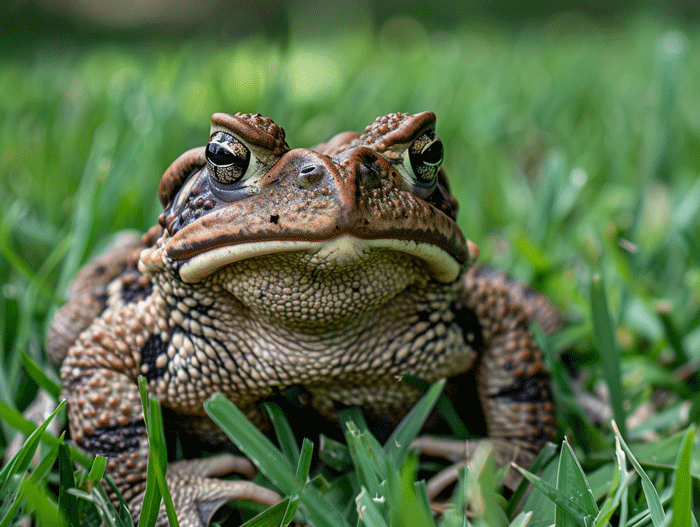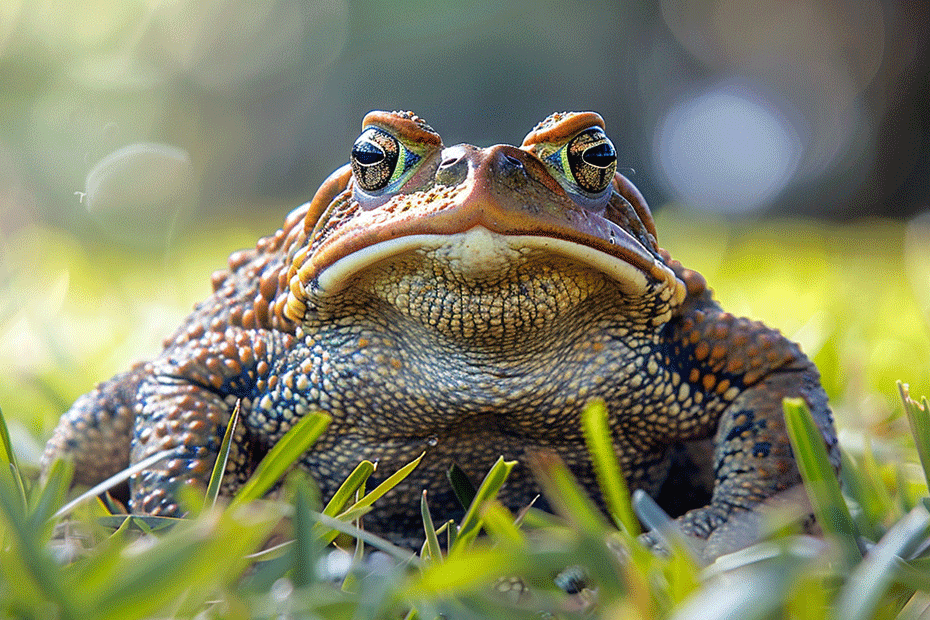Are you aware of the havoc that cane toads wreak in their environment? These invasive amphibians have become a notorious problem in various regions. Their toxic skin secretions pose a serious threat to native wildlife, pets, and even humans.
You might be surprised to learn about the ecological disruptions caused by cane toads. Their voracious appetite and rapid reproduction rates can lead to devastating consequences for local ecosystems. Stay tuned to discover the full extent of the issues associated with these troublesome amphibians.
Key Takeaways
- Cane toads, introduced to Australia in the 1930s to control pests, have become a major invasive species, causing ecological disruptions.
- Their rapid reproduction rates, adaptability to various habitats, and lack of natural predators contribute to their widespread presence.
- Cane toads pose a significant threat to native wildlife through predation, competition for resources, and their toxic defense mechanism.
- Control measures against cane toads include physical removal, introducing predators, researching diseases for biological control, and exploring sterilization techniques.
History of Cane Toads

Introduction of Cane Toads to Australia
In the 1930s, cane toads were introduced to Australia from South and Central America with the intent to control agricultural pests. But, this decision resulted in unintended consequences that are still being felt today. The cane toad, also known as the giant neotropical toad (Rhinella marina), has since become a notorious invasive species in Australia.
Key Terms:
- Cane Toads: Giant neotropical toads (Rhinella marina) introduced to Australia in the 1930s.
- Invasive Species: Non-native species that cause harm to the environment, economy, or human health.
Rapid Spread Across Australia
Even though initial efforts to contain them, cane toads quickly multiplied and spread across vast areas of Australia. Their ability to adapt to various habitats, high reproductive rates, and lack of natural predators have allowed them to thrive in diverse environments, from urban areas to rural landscapes.
| Fact | Data |
|---|---|
| Number of cane toads introduced | 102 breeding pairs |
| Speed at which they spread in Australia | 60 km/year |
Impact on Native Wildlife

Predation on Native Species
Cane toads are known for their voracious appetites, posing a serious threat to native wildlife. They are indiscriminate feeders, preying on a wide range of species, including small mammals, birds, reptiles, and even insects. This predatory behavior disrupts the delicate balance of ecosystems, leading to a decline in native populations struggling to cope with this new invasive predator.
Competition for Resources
Plus to predation, cane toads compete with native wildlife for essential resources such as food and shelter. Their rapid reproductive rates and adaptability give them a competitive edge, outcompeting native species for limited resources. This competition further adds to the challenges faced by already vulnerable native animals in their struggle for survival.
Toxicity to Predators
One of the most infamous characteristics of cane toads is their toxicity. They secrete potent toxins from glands on their skin as a defense mechanism against predators. Unfortunately, many native predators that attempt to prey on cane toads are not equipped to handle these toxins, leading to illness or even death. This toxic defense mechanism has a cascading effect on local predator populations, impacting the overall ecosystem dynamics.
Control Measures

Physical Removal
- Manual removal of cane toads is one method used to control populations.
- Implementing barriers can help prevent their spread to new areas.
- Setting traps is an effective way to capture cane toads.
- Introducing predators that specifically target cane toads can help manage their numbers.
- Research into diseases that affect cane toads is ongoing for biological control methods.
- Sterilization techniques are being explored to limit cane toad reproduction.
Remember, a combination of physical and biological control measures is often the most effective way to manage cane toad populations.
Conclusion
Managing cane toad populations is crucial for preserving ecosystems. By utilizing a combination of physical removal methods and biological control strategies, such as introducing predators and exploring sterilization techniques, we can effectively curb their impact. It’s essential to continue researching innovative solutions to keep cane toad numbers in check and prevent further ecological disruptions. Remember, proactive measures and a multi-faceted approach are key in addressing the challenges posed by cane toads.

Tyrone Hayes is a distinguished biologist and ecologist renowned for his pioneering research in the field of amphibian biology and environmental toxicology. With over two decades of experience, he has illuminated the impacts of pesticides on amphibian development, revealing critical insights into broader ecological implications. Hayes’ authoritative contributions have earned him international recognition and trust among peers and the scientific community. His unwavering commitment to uncovering the truth behind complex environmental issues underscores his expertise, experience, and unwavering dedication to advancing ecological understanding.
